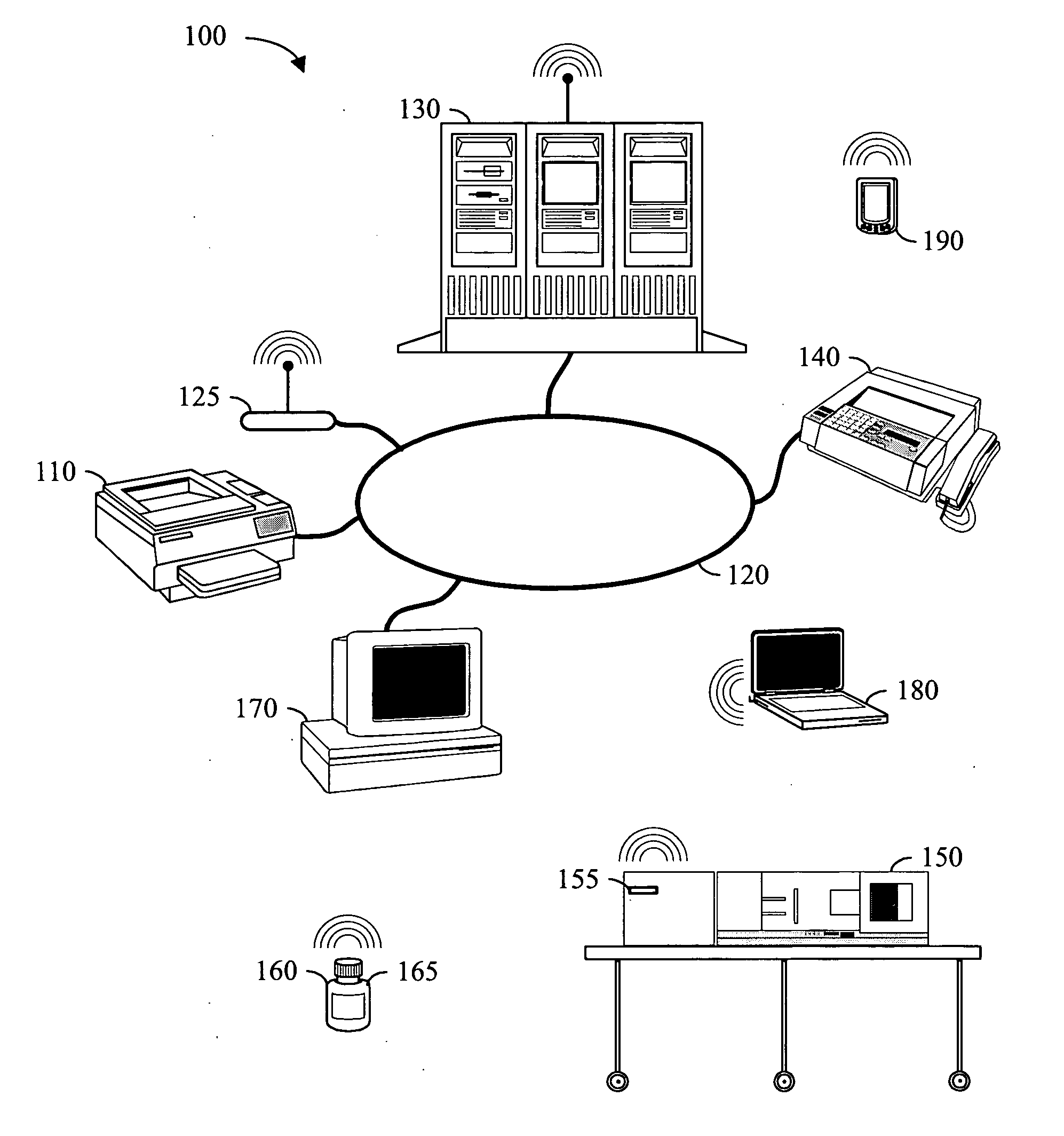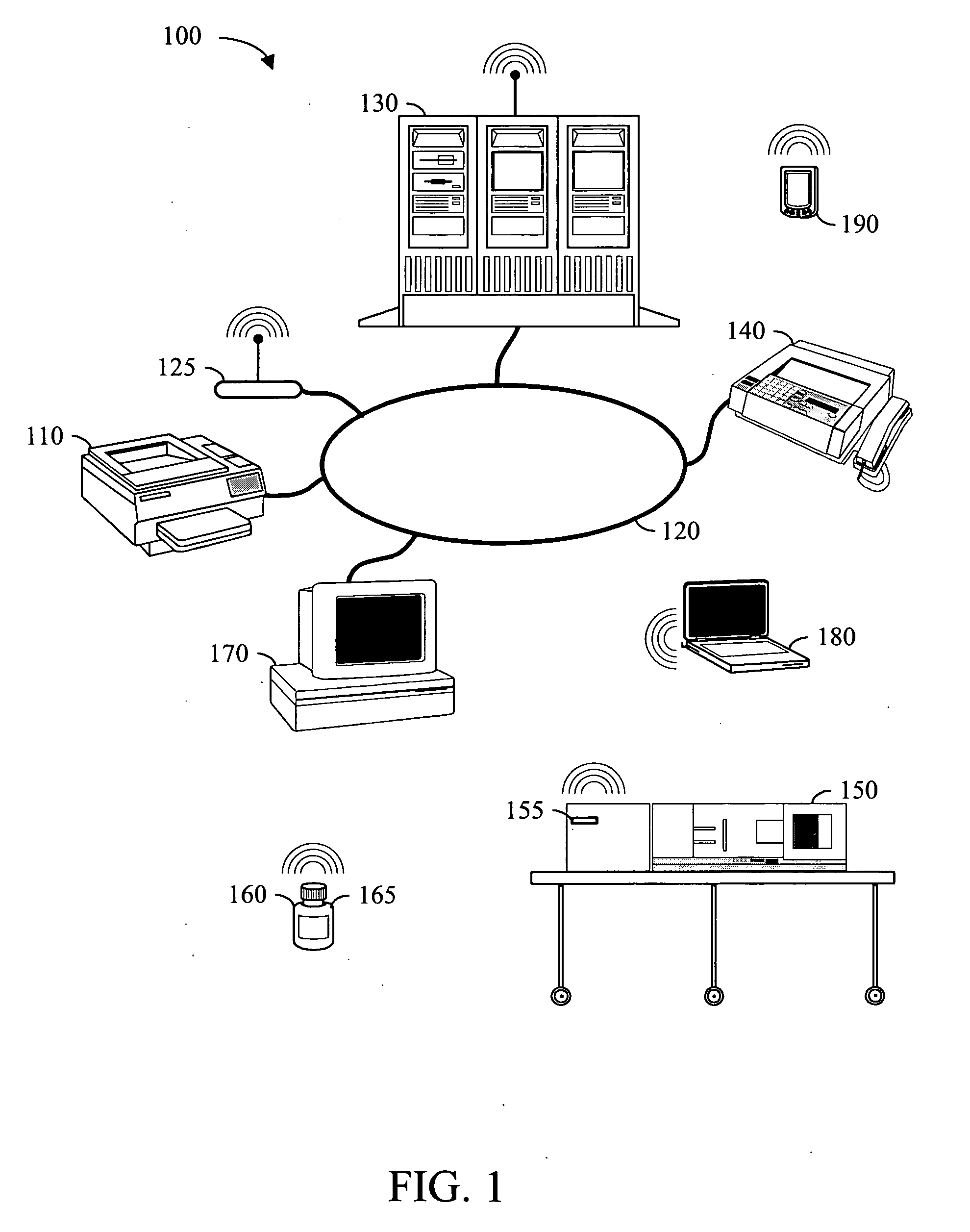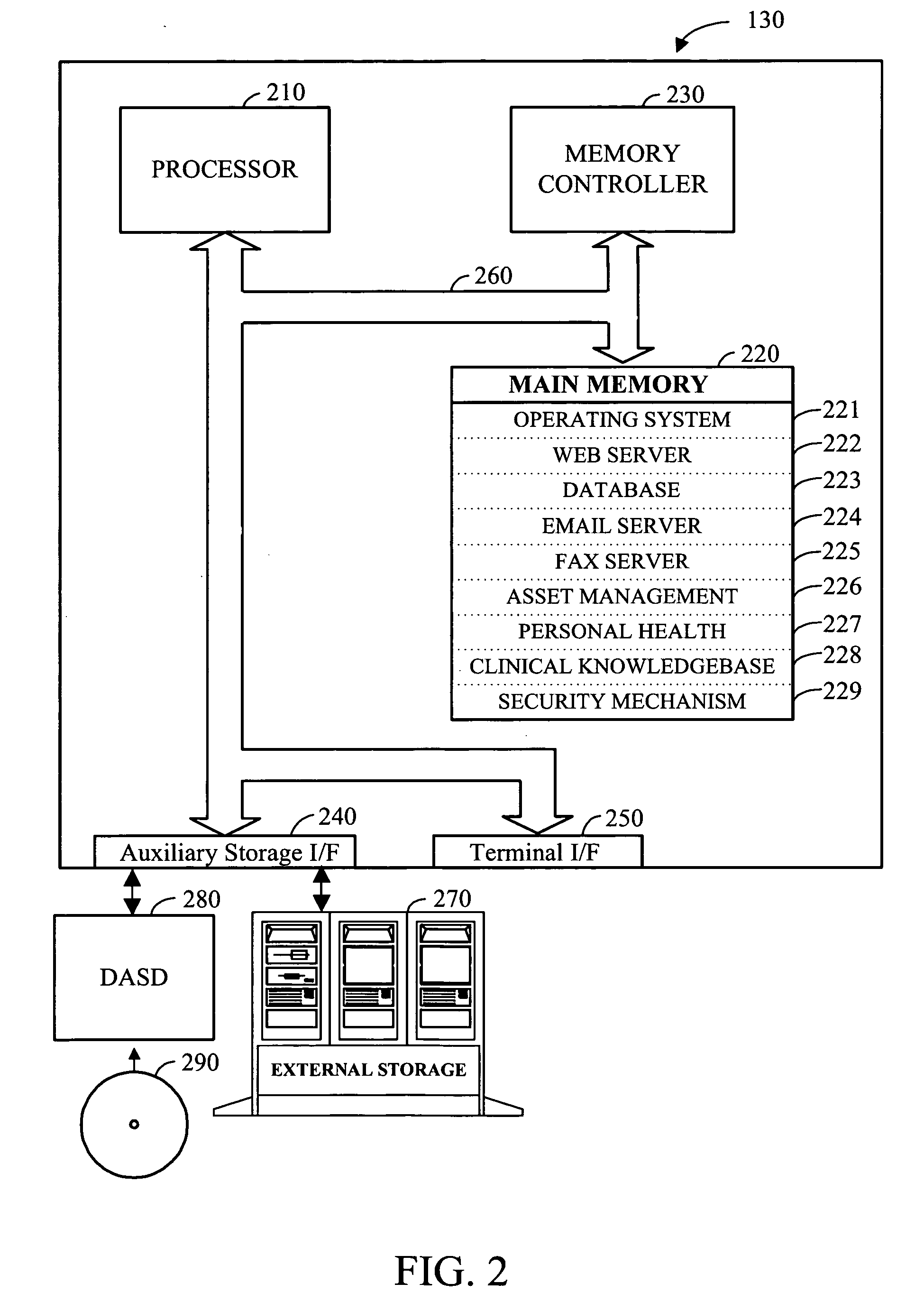Apparatus and method for integrated healthcare management
a technology of integrated healthcare management and apparatus, applied in the field of health care, can solve the problems of increasing the demand and cost of providing healthcare across most segments of society, increasing the complexity and cost of providing healthcare, and increasing the complexity of providing healthcare for the population of the world, so as to achieve convenient and efficient standards-based healthcare management system, improve quality, and improve the effect of quality
- Summary
- Abstract
- Description
- Claims
- Application Information
AI Technical Summary
Benefits of technology
Problems solved by technology
Method used
Image
Examples
Embodiment Construction
[0029]The apparatus and methods disclosed herein implement a convenient and efficient standards based healthcare management system. The various preferred embodiments of the present invention enable the healthcare industry to deliver efficient, low cost and higher quality services through value added RFID technology and information processing solutions. The most preferred embodiments of the present invention enable the tracking of medical assets, processing of portable electronic patient health information, and provides a robust web-enabled interface for monitoring and managing interoperable healthcare information. The three main components of the present invention are the Asset Management component, the Personal Health Manager component, and the Clinical Information Management component. These components, taken together, offer a standards-based modular, platform for delivering efficient and effective healthcare management solutions.
[0030]Referring now to FIG. 1, an RFID-enabled, int...
PUM
 Login to View More
Login to View More Abstract
Description
Claims
Application Information
 Login to View More
Login to View More - R&D
- Intellectual Property
- Life Sciences
- Materials
- Tech Scout
- Unparalleled Data Quality
- Higher Quality Content
- 60% Fewer Hallucinations
Browse by: Latest US Patents, China's latest patents, Technical Efficacy Thesaurus, Application Domain, Technology Topic, Popular Technical Reports.
© 2025 PatSnap. All rights reserved.Legal|Privacy policy|Modern Slavery Act Transparency Statement|Sitemap|About US| Contact US: help@patsnap.com



